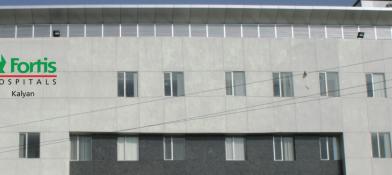Thyroidectomy
Thyroidectomy is the surgical procedure of removing the thyroid gland in disease. A part of the gland or the entire gland can be removed when the thyroid is affected. This depends on the cause for which the thyroid is removed.
Anatomy:
The thyroid is located on the front part of the neck and secreting thyroid hormones which is butterfly shaped. It contains two lobes that are joined by a connection called the isthmus. It is one of the important parts of the endocrine system of the body. Thyroid hormones are necessary for metabolism and control the metabolic rate and every organ’s function in the body.
Indications:
Thyroid surgery is indicated when the thyroid is diseased. It is indicated in:
- Cancers of the thyroid to remove most of the thyroid.
- Benign enlargements of the thyroid called goiter which affects breathing.
- Overactivity of the thyroid gland is called hyperthyroidism where excessive thyroid hormone is produced.
- In the case of biopsy where suspicious nodules are found in the thyroid
- Spread of cancer from other primary sites to thyroid
- Lymphomas of the thyroid
Types of thyroidectomy:
Depending on the amount of the thyroid gland to be removed, there are two types of thyroidectomies. They are:
- Partial thyroidectomy where only a part of the gland is removed.
- Total or near-total thyroidectomy where the gland is removed in total.
Partial thyroidectomy is again of various types based on the area of the thyroid removed. These are:
- Hemi-thyroidectomy or lobectomy is the procedure where only one lobe of the thyroid is removed.
- Isthmusectomy is the procedure where the isthmus of the thyroid is removed.
- Open biopsy is where the nodule of the thyroid is only removed.
Based on the cause of the thyroid disease, the type of procedure is selected. If the thyroid disease affects only one lobe or a part of the lobe then partial thyroidectomy is selected. If the thyroid disease affects more than one lobe like a large goiter or a large cancer, then the entire gland is removed.
Based on the type of approach to the thyroid during surgery, thyroidectomy is of three types. They are:
- Conventional thyroidectomy is where a cut is made on the center of the neck in the creases of the skin. This is the most common thyroidectomy procedure.
- Transoral thyroidectomy is where the thyroid is approached through the mouth.
- Endoscopic thyroidectomy is where small cuts are made in the neck and a camera is sent through this cut to visualize the gland on a screen. Then using special instruments the thyroid is removed by the guidance from the screen.
Before the procedure:
An individual needs surgery to remove part or total thyroid. All the medications taken by the individual should be informed to the HCP along with the history of previous diseases, infections, surgeries, and allergies. Based on the medications taken, some medicines are advised to stop depending on the health condition and risk vs. benefits. These include over-the-counter medications, blood thinners, and opioid painkillers. The HCP may prescribe other medicines like iodine or potassium solution before undergoing surgery.
The HCP assesses the severity of thyroid disease using blood tests, electrocardiogram, chest X-ray, and echocardiogram. These are done to assess the body functions and know the health status. Investigations are also done to assess thyroid disease like ultrasound, MRI, and thyroid function tests. Occasionally a fine needle biopsy may be done to assess the thyroid disease.
The procedure is done under general anesthesia hence one should refrain from eating at least 8-10 hours before the procedure. One should refrain from smoking and alcohol before undergoing TAVI/TAVR. Based on the thyroid disease and its location the type of thyroid surgery is selected.
During the procedure:
During the surgery, several monitors are placed on the body to check the heart rate, rhythm, blood pressure, and oxygen status. A small cut is made in the center of the neck in the skin crease to reduce the visibility of the scar in the future. Depending on the thyroid disease, a part of the gland or the entire gland is removed. The vocal cords are taken care of to avoid any damage to them while operating on the thyroid. In cases of thyroid cancer, if the lymph nodes are affected they are also removed.
After the procedure:
An individual is monitored till the vital stabilize. Medications are given to reduce the pain and ward off infection. A drain is placed in the surgical site to drain the fluids which is removed in a day. One can eat and drink after the procedure and return to the activities of daily living based on their comfort. However, one should wait at least 10-14 days after the surgery to do strenuous exercises. It will take at least a year for the surgical scar to fade off.
Side effects:
Thyroid surgery is associated with side effects like pain, bruising, and infection at the site of surgery. It can also cause hoarseness and weakness of the voice. This occurs due to damage to the nerves near the vocal cord area during the surgery or due to the tube placed in the mouth. This is temporary and one can regain their voice in a few days. Acute respiratory distress can occur due to bleeding and fluid secretion.
Risks and complications:
Certain risks and complications associated with the procedure include permanent hoarseness of the voice due to permanent damage to the nerves or vocal cords. Low levels of parathyroid hormones due to damage to the parathyroid glands that regulate the calcium levels in the body.
Conclusion:
Thyroidectomy is a surgery done to treat the diseases of the thyroid. It helps to treat many benign and malignant conditions of the thyroid. It is a safe and common procedure that is done to the thyroid to increase the quality of life of an individual.









